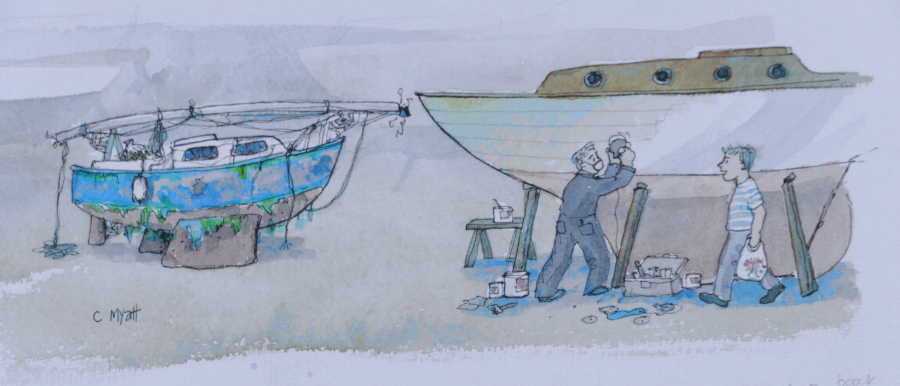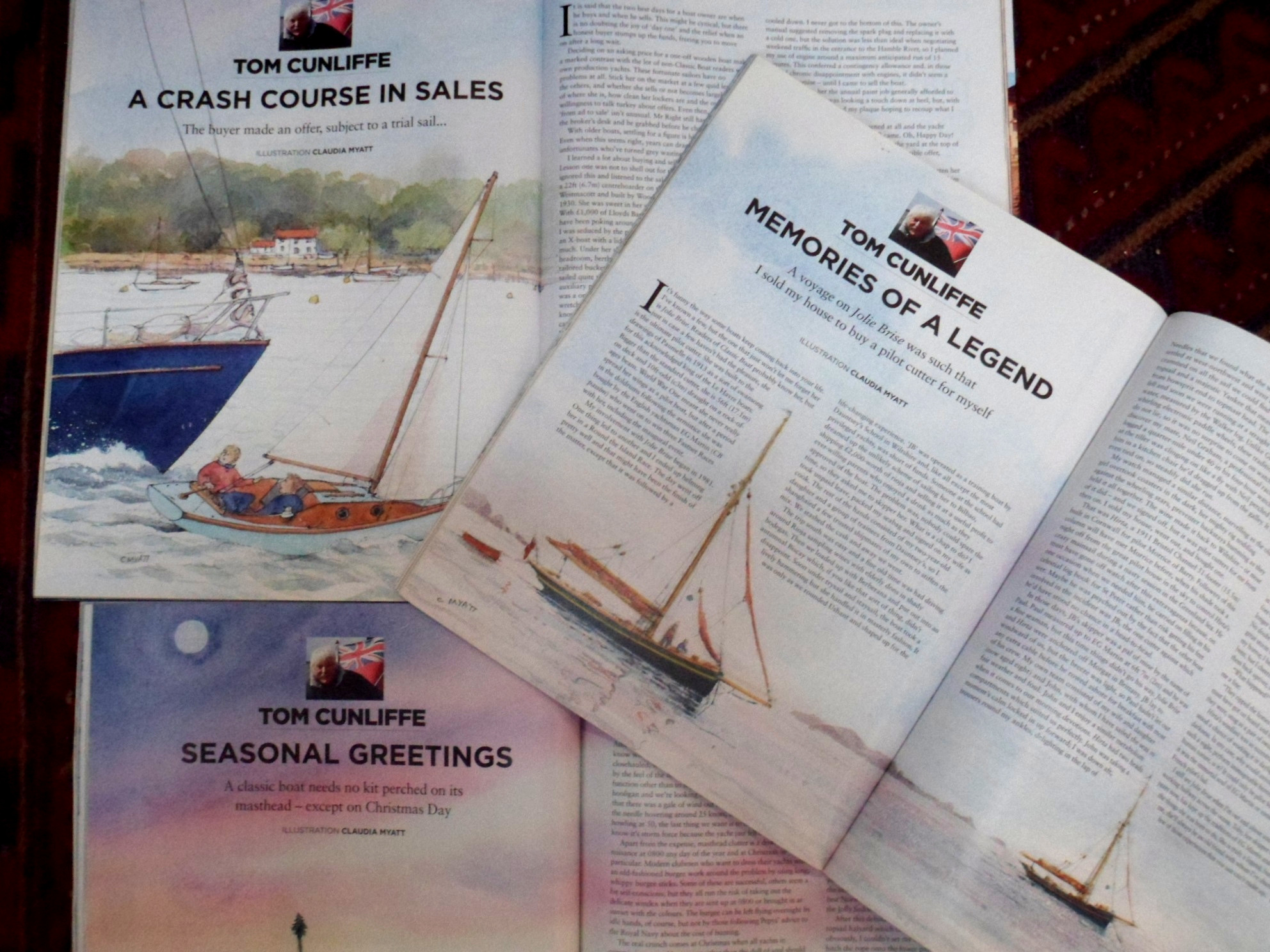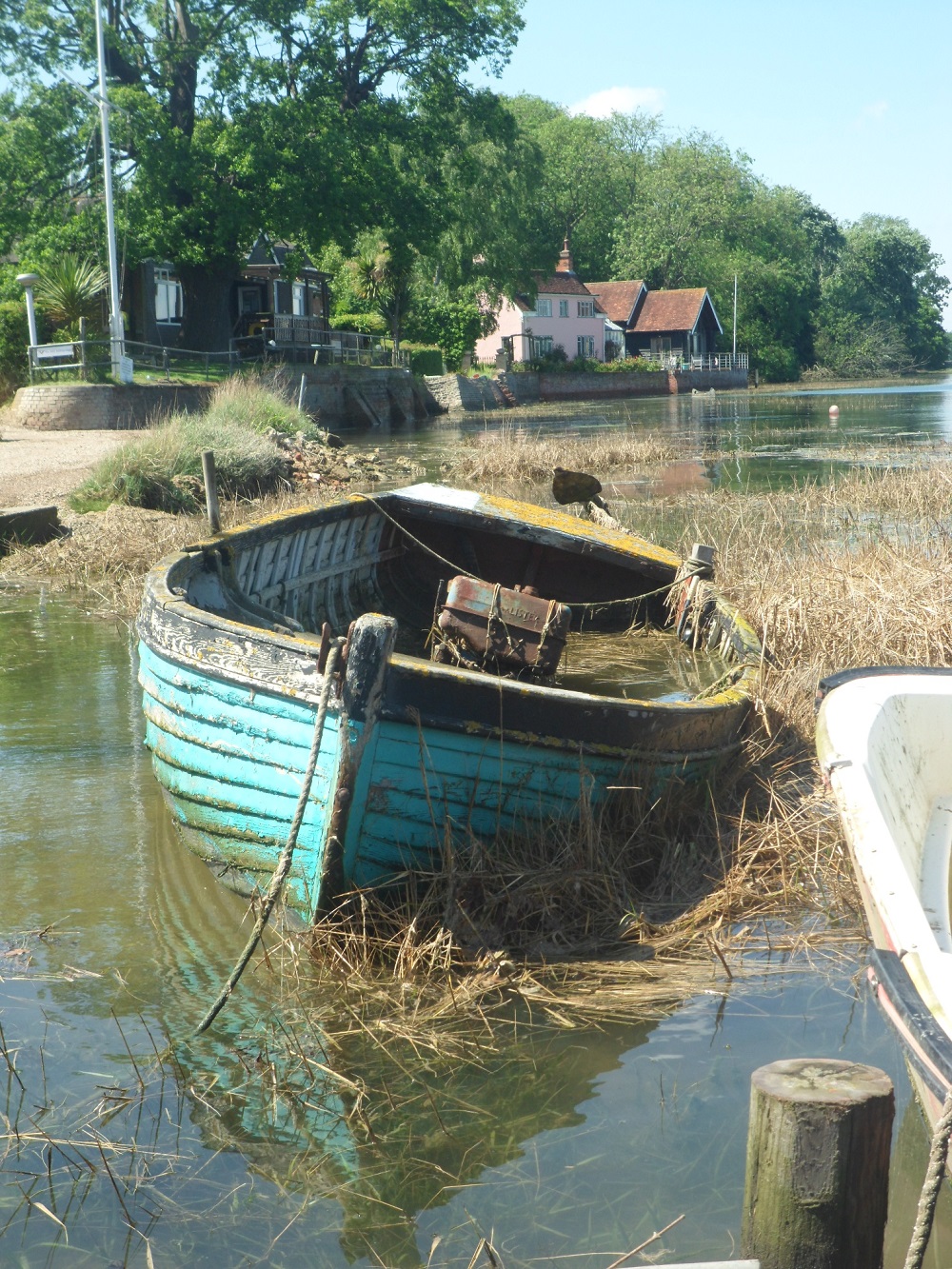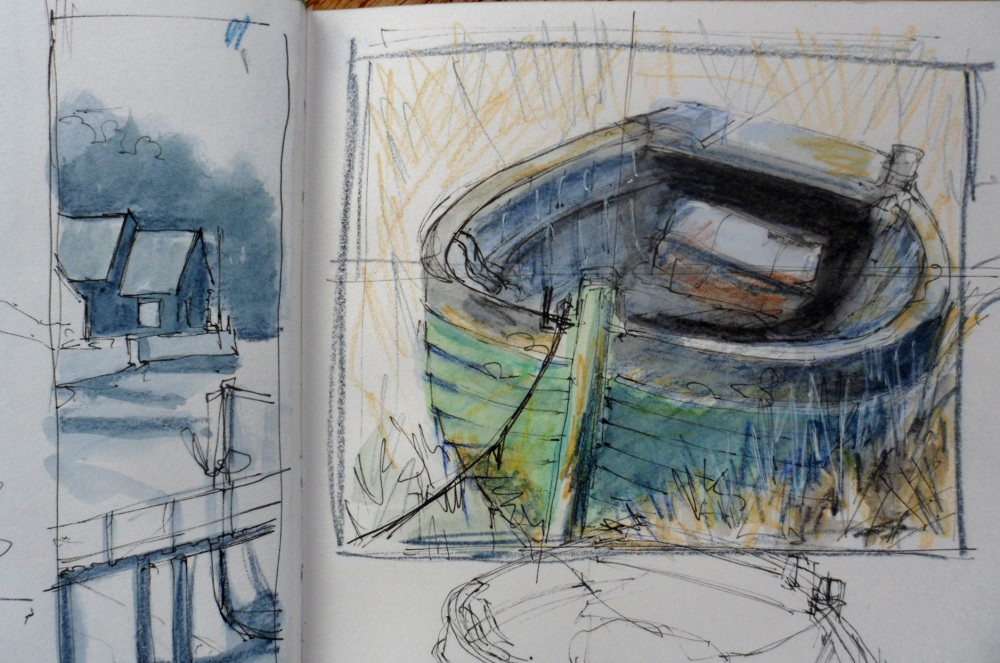Scanning the horizon
I’ve been home for over two months now, trying to catch up with work and life in spite of the best efforts of a rather hefty virus to try and stop me, but I had to return quickly to what is laughingly known as ‘normal’ routine. It took a while after the luxury of ship life to get used to having to make my own tea again in the morning and buy things in supermarkets (what? empty fridge? where’s the wine waiter?) but on the whole it was good to be back to my funny little life on the river, my lovely friends, boats and music. The studio was fine though the mice have made inroads into my heap of filing (that will save me time).
One of the challenges of being away from the studio for two months is getting magazine illustrations in on time – you don’t mess with print deadlines.

I can work anywhere as long as I have a table, small drawing board and basic art gear, but one of the most crucial items in my studio is the scanner; it’s the magic carpet that gets my work from drawing board to client. How did we manage without them? Within five minutes of the paint drying on my monthly cartoon for Practical Boat Owner, it’s scanned, cropped and tweaked, and in the art editor’s inbox. That last five minutes is when I usually think of the caption!

My contribution to Classic Boat magazine is a bit different. It’s a full page watercolour illustration of Tom Cunliffe’s monthly piece, a recollection of his hair-raising sailing adventures in the days before electronics or reliable engines. It features larger than life characters, close shaves with disaster, and the importance of not taking life too seriously.
My job is to read the article, imagine each scene as the tale unfolds and find the one that I think would make the best illustration. Of course there is little or no photographic reference, so my scenes are pure invention supported by my experience of sailing traditional boats. The process goes something like this:
1. Tom sends me his words
2. I sketch out a likely scene, very rough and scribbly, scan it and send to Tom and art editor
3. Art editor produces a mock up page, with or without suggestions for changing it
4. I paint a full size version, asking Tom for facts when needed (Which sails were up? Did the Frenchman have a beard? What colour was the dinghy?)
5. When finished, the painting is around A3 size, too big for my own scanner. I photograph it with pocket camera and send to art editor/Tom for another mock up.
6. Once everyone is happy I nip to the printshop in town for a full size scan and email that in.
Stage 5 is the trickiest. At that point the art editor says ‘great!’ and Tom says ‘Great – but can you just…… ‘ Ah, how illustrators hate that phrase ‘can you just….’ In this case it usually means I’ve got something technically wrong with the boat – something’s out of scale or amiss with the rigging or, worse, I’ve made our hero look too old. Sometimes I can adjust it, sometimes I can’t and have to start again. If it’s a minor indiscretion and deadline is looming it can be overlooked or the art editor can do a bit of magic with photoshop. Having said that, all things get better with practice, and my accuracy rate has improved dramatically since I started over a year ago.
Whilst at sea for two months I did two PBO cartoons and two Classic Boat illustrations and sent them in on time, but without access to a scanner it was challenging. I asked around for a scanner but with no success – I could have pursued harder but it’s hard to ask favours of busy people you don’t know when my role on board was not to make a nuisance of myself. So it was on to plan B, which was to chat up the ship’s Chaplain.
There was method in my madness. I had noticed that the chaplain was obviously a keen photographer, so I asked if he would help me to take a good photo of my Classic Boat image. It turned out that Gordon was also the chaplain of the Dunkirk Little Ships fleet; in fact the little ship he crews for is currently in Suffolk, a mile up river from me. Gordon helped me out each time I needed to send an image, which involved finding a part of the deck with good light but no direct sun, taping my image flat to a vertical service and then trying to get as good a photograph as possible without a tripod. Luckily, there was wifi on board, after a fashion – it was by satellite of course and very slow especially if lots of people were using it at once. I needed to find a quiet time like early in the morning to email a large attachment.
What an extraordinary world we live in. Twenty years ago, when email was by dial-up (remember that?) and phones were things that made phone calls, it’s hard to believe how much has changed. And before internet – somehow we managed!

Luckily for me, drawing and painting – skills as old as time – are still a part of this world and still in demand. Illustrations are always needed, and people still want to learn to draw and paint, a basic and satisfying urge to appreciate and connect with our world. The first Pin Mill painting weekend took place in gorgeous weather last weekend with a small group of enthusiastic students and it went well. What a pleasure to teach and encourage people to sketch in such a lovely place.
If you’re tempted to join me for another one day workshop, more details are on my tuition page. Beginners always welcome! Now back to the drawing board as more deadlines are looming (they tend to do that). Bye for now.




